Bulbs
Flower Basics
Flower Beds & Specialty Gardens
Flower Garden
Garden Furniture
Garden Gnomes
Garden Seeds
Garden Sheds
Garden Statues
Garden Tools & Supplies
Gardening Basics
Green & Organic
Groundcovers & Vines
Growing Annuals
Growing Basil
Growing Beans
Growing Berries
Growing Blueberries
Growing Cactus
Growing Corn
Growing Cotton
Growing Edibles
Growing Flowers
Growing Garlic
Growing Grapes
Growing Grass
Growing Herbs
Growing Jasmine
Growing Mint
Growing Mushrooms
Orchids
Growing Peanuts
Growing Perennials
Growing Plants
Growing Rosemary
Growing Roses
Growing Strawberries
Growing Sunflowers
Growing Thyme
Growing Tomatoes
Growing Tulips
Growing Vegetables
Herb Basics
Herb Garden
Indoor Growing
Landscaping Basics
Landscaping Patios
Landscaping Plants
Landscaping Shrubs
Landscaping Trees
Landscaping Walks & Pathways
Lawn Basics
Lawn Maintenance
Lawn Mowers
Lawn Ornaments
Lawn Planting
Lawn Tools
Outdoor Growing
Overall Landscape Planning
Pests, Weeds & Problems
Plant Basics
Rock Garden
Rose Garden
Shrubs
Soil
Specialty Gardens
Trees
Vegetable Garden
Yard Maintenance
Why Do Evergreens Stay Green in the Winter?
Why Do Evergreens Stay Green in the Winter?. Evergreen, or coniferous, trees have special leaves that resist cold and moisture loss. They cut back on the amount of water they lose from their leaves by storing water in the cone area of the tree. Pine trees reduce their loss of water by providing a waxy layer surrounding the pine needles as the tree...
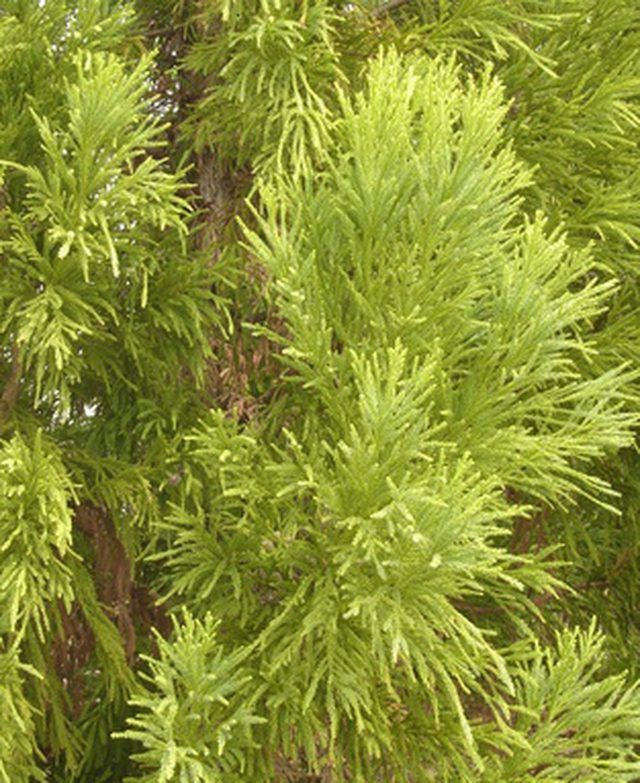
Evergreen, or coniferous, trees have special leaves that resist cold and moisture loss. They cut back on the amount of water they lose from their leaves by storing water in the cone area of the tree. Pine trees reduce their loss of water by providing a waxy layer surrounding the pine needles as the tree adds water to its reserves.
Evergreens and Pine Trees
Evergreens store units of essential water in their leaves in preparation for winter, and foods necessary for the trees' growth are manufactured in the leaves in cells containing chlorophyll, which gives the leaves their green color.
Pine and fir trees, which are also evergreens, have long, thin needles that allow snow to easily fall off the tree, and the trees may also have chemicals in them that make it harder for them to freeze, says the MadSci Network.
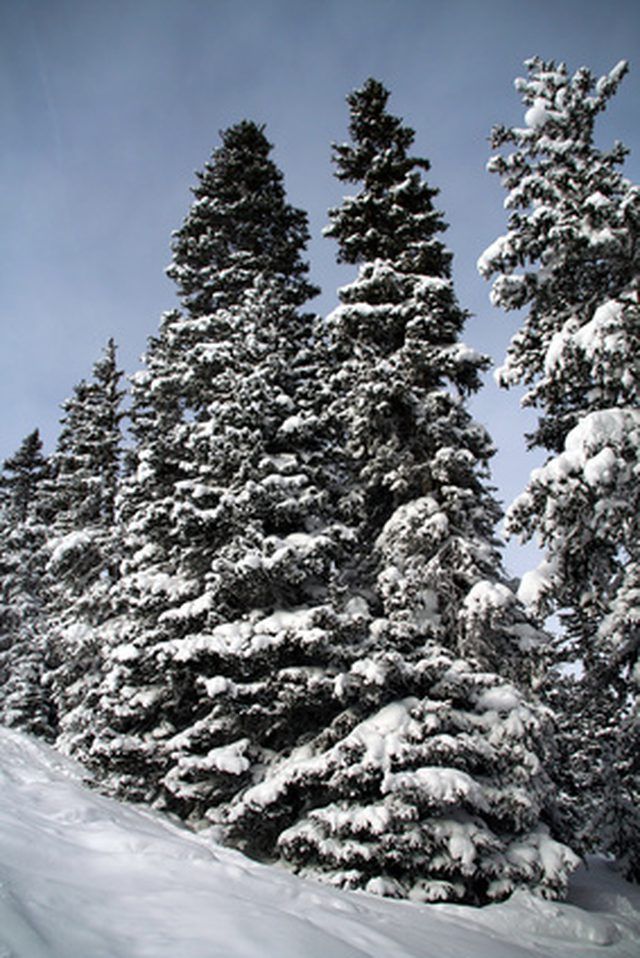
Evergreens Survive Cold and Dry Winters
"West Virginia Wildlife" magazine states that evergreen plants have many different ways to survive the cold and dry winters, and they are resistant to drying out because of their tough, leathery leaves or needles. Some plants, the article says, can actively concentrate chemicals that work like antifreeze in their cell fluids, while other evergreens buried in a snow bank help to provide moisture and shelter from drying winds.
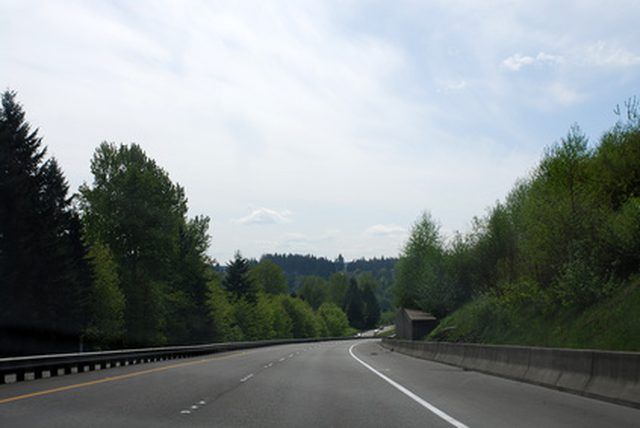
Evergreen Needles Are Regular Leaves Rolled up Tightly
Brian Jorgenson, of the Boise Community Forestry at the Boise Department of Parks and Recreation, writes on the Idaho Forest Products Commission website that wax-coated evergreen needles adapt for the purpose of survival, as the coating helps to save water during summer and winter. Botanists, he notes, long ago discovered that the needles are regular leaves that are rolled up very tightly, a conversion process that allows evergreens to conserve water for photosynthesis. Jorgenson suggests trying an experiment to understand the photosynthesis process: Place two cups of water on a table in the sun, but cover one cup with plastic while leaving the other cup open to the air. Observe from which cup the water evaporates faster, and the answer to this experiment will help you to understand how "the waxy covering on evergreen needles helps to conserve water."
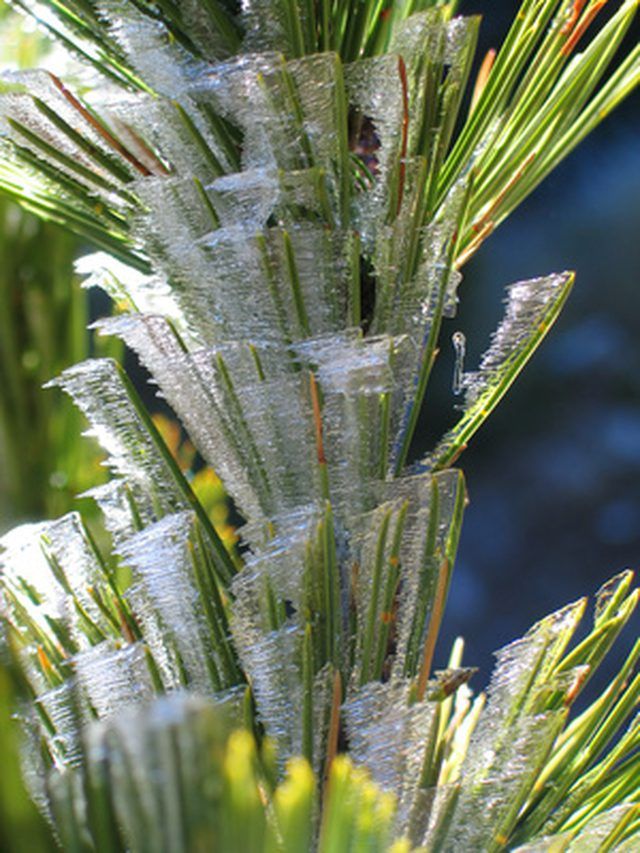
Green Shoots Instead of Leaves
Some evergreens, according to GoPaperless.info, usually have darker green shoots or spiky needles instead of leaves, and sometimes the shoots or needles fall, triggering new shoots to replace the fallen ones. This cycle allows these trees to stay green all year round.
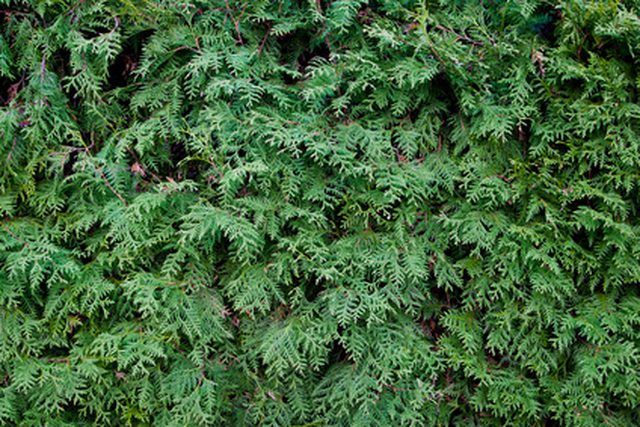
Evergreens Stay Green in Winter Because Leaves Regenerate
Martha Maletta, home horticultural consultant at Hunterdon County Rutgers Cooperative Extension, states on the Hunterdon County website that evergreens--both needle and broadleaf--stay green all year because they do not "lose all their leaves at one time" and not because they "never lose leaves." Maletta writes in the online Hunterdon County article "Yellowing, Browning and Dropping Leaves" that depending on species, leaves last from one to six years, and each year some of the oldest or inside leaves drop.
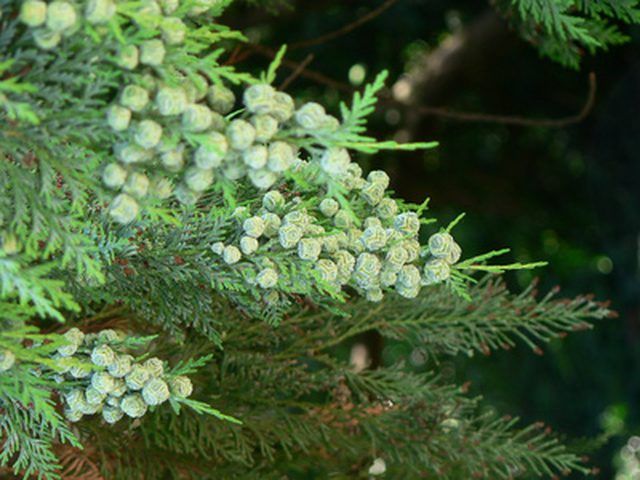
English Ivy Is an Evergreen
English ivy is an evergreen-climbing vine with a firm wooden stem that attaches to the bark of trees and other surfaces with the aid of a sticky substance from its roots. English ivy can be pesky in that the plant overwhelms the surface it rises on--even consuming the trunks of large trees--and thereby creating a place for disease to grow. If you wish to cultivate this evergreen, find a special spot in your garden and create a trellis to accommodate the vine. Do not plant English ivy at the base of your favorite tree, and be prepared to regularly trim this evergreen vine.
